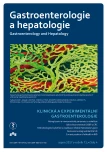Epidemiological study of obesity in populations of different racial, cultural, economic and dietary backgrounds
Authors:
M. Zelenková 1–3; L. Zelenka 4; I. Knížková 5; P. Kunc 5; V. Lovětínská 4; D. Lukešová 2
Authors‘ workplace:
Centrum pro léčbu obezity, ISCARE I. V. F. a. s., Praha
1; Katedra chovu zvířat a potravinářství v tropech, FTZ – ČZU v Praze
2; Multioborová JIP, Nemocnice Na Františku, Praha
3; Centrum pro traumatologii, ÚVN – VFN Praha
4; Výzkumný ústav živočišné výroby, v. v. i., Praha
5
Published in:
Gastroent Hepatol 2017; 71(4): 341-347
Category:
doi:
https://doi.org/10.14735/amgh2017341
Overview
The aim of this work was to evaluate the current situation of body mass index (BMI) values within the global population in terms of geographical region, cultural and economic differences. It was used to test the hypothesis that BMI values differ according to geographical region, culture, and economic performance. Based on statistical evaluation of data from 2010 and 2014 provided by the World Health Organisation (WHO), there has been a statistically insignificant increase in BMI in specific areas of the world. In both periods in question, North America led with the highest BMI values, whereas countries in the sub-Saharan Africa had the lowest BMI values. There were significant differences (p < 0.05) in the values of BMI between most evaluated areas. Similarly, there was a significant difference (p < 0.05) between economically developed and economically less developed countries. However, the increase in BMI values between 2010 and 2014 was statistically inconclusive in both economies. The highest BMI in the monitored period was detected in Christian countries, followed by Islamic countries, and finally in countries where Buddhism and Hinduism are the dominant religions. In this context, among economically less-developed countries, Christian countries had the highest BMI values, whereas among economically developed countries Islamic countries had the highest BMI values. There was no significant difference in BMI values between economically developed and economically less-developed Buddhist and Hinduism countries. Thus, the hypothesis was judged correct.
Key words:
body mass index – geographical region – economic development – culture
The authors declare they have no potential conflicts of interest concerning drugs, products, or services used in the study.
The Editorial Board declares that the manuscript met the ICMJE „uniform requirements“ for biomedical papers.
Submitted:
16. 11. 2016
Accepted:
4. 1. 2017
Sources
1. Swinburn BA, Sacks G, Hall KD et al. The global obesity pandemic: shaped by global drivers and local enviroments. Lancet 2011; 378 (9793): 804–814. doi: 10.1016/S0140-6736 (11) 60813-1.
2. Broyles ST, Denstel D, Church TS et al. The epidemiological transition and the global childhood obesity epidemic. Int J Obes 2015; 5 (Suppl 2): S3–S8 doi: 10.1038/ijosup.2015.12.
3. Hainer V. Základy klinické obezitologie. Praha: Grada Publishing 2011: 464.
4. Kunešová M. Obezita – etiopatogeneze, diagnostika a léčba. Int Med Praxi 2004; 9: 435–440.
5. Mandviwala T, Khalid U, Deswal A. Obesity and cardiovascular disease: a risk factor or a risk marker? Curr Atheroscler Rep 2016; 18 (5): 21. doi: 10.1007/s11883-016-0575-4.
6. Housová J, Kasalický M, Michalský D et al. Obezita jako rizikový faktor kardiovaskulárních onemocnění – bariatrická léčba. Kap Kardiol 2005; 7 (1–40): 90–94.
7. Housová J, Kasalický M, Dolinková M et al. Možnosti bariatrické chirurgie při léčbě metabolického syndromu. Diabetologie, metabolismus, endokrinologie, výživa 2006; Suppl 2: 23.
8. Palmer BF, Clegg DJ. The sexual dimorphism of obesity. Mol Cell Endocrinol 2015; 402: 113–119. doi: 10.1016/j.mce.2014.11.029.
9. Dicker D, Feldman BS, Leventer-Roberts M et al. Obesity or smoking: Which factor contributes more to the incidence of myocardial infarction? Eur J Intern Med 2016; 32 (6): 43–46. doi: 10.1016/j.ejim.2016.03.029.
10. Popkin BM. The shift in stages of the nutrition transition in the developing world differs from past experiences! Public Health Nutr 2002; 5 (1A): 205–214.
11. Rogers PJ, Brunstrom JM. Appetite and energy balancing. Physiol Behav 2016; 164 (Pt B): 465–471. doi: 10.1016/j.physbeh. 2016.03.038.
12. Flegal KM, Caroll MD, Ogden CL et al. and trends in obesity among US adults. JAMA 2010; 303 (3): 235–241. doi: 10.1001/jama.2009.2014.
13. Fitzgibbon ML, Blackman LR, Avellone ME. The relationship between body image discrepancy and body mass index across ethnic groups. Obes Res 2000; 8 (8): 582–589.
14. Tulloch-Reid MK, Hanson RL, Sebring NG et al. Both subcutaneous and visceral adipose tissue correlate highly with insulin resistance in african americans. Obes Res 2004; 12 (8): 1352–1359.
15. Karelis AD, St-Pierre DH, Conus F et al. Metabolic and body composition factors in subgroups of obesity: what do we know? J Clin Endocrinol Metab 2004; 89 (6): 2569–2575.
16. Sadeghirad B, Motaghipisheh S, Kolahdooz F et al. Islamic fasting and weight loss: a systematic review and meta-analysis. Public Health Nutr 2014; 17 (2): 396–406. doi: 10.1017/S1368980012005046.
Labels
Paediatric gastroenterology Gastroenterology and hepatology SurgeryArticle was published in
Gastroenterology and Hepatology

2017 Issue 4
Most read in this issue
- Outcome of treatment of Helicobacter pylori infection based on microbiological susceptibility testing following the unsuccessful second-line eradication treatment
- Acute appendicitis – a rare complication of colonoscopy
- Self-expandable coated metal Danis stent as a bridge to liver transplantation
- Graft-duodenal fistula – a cause of massive gastrointestinal bleeding
